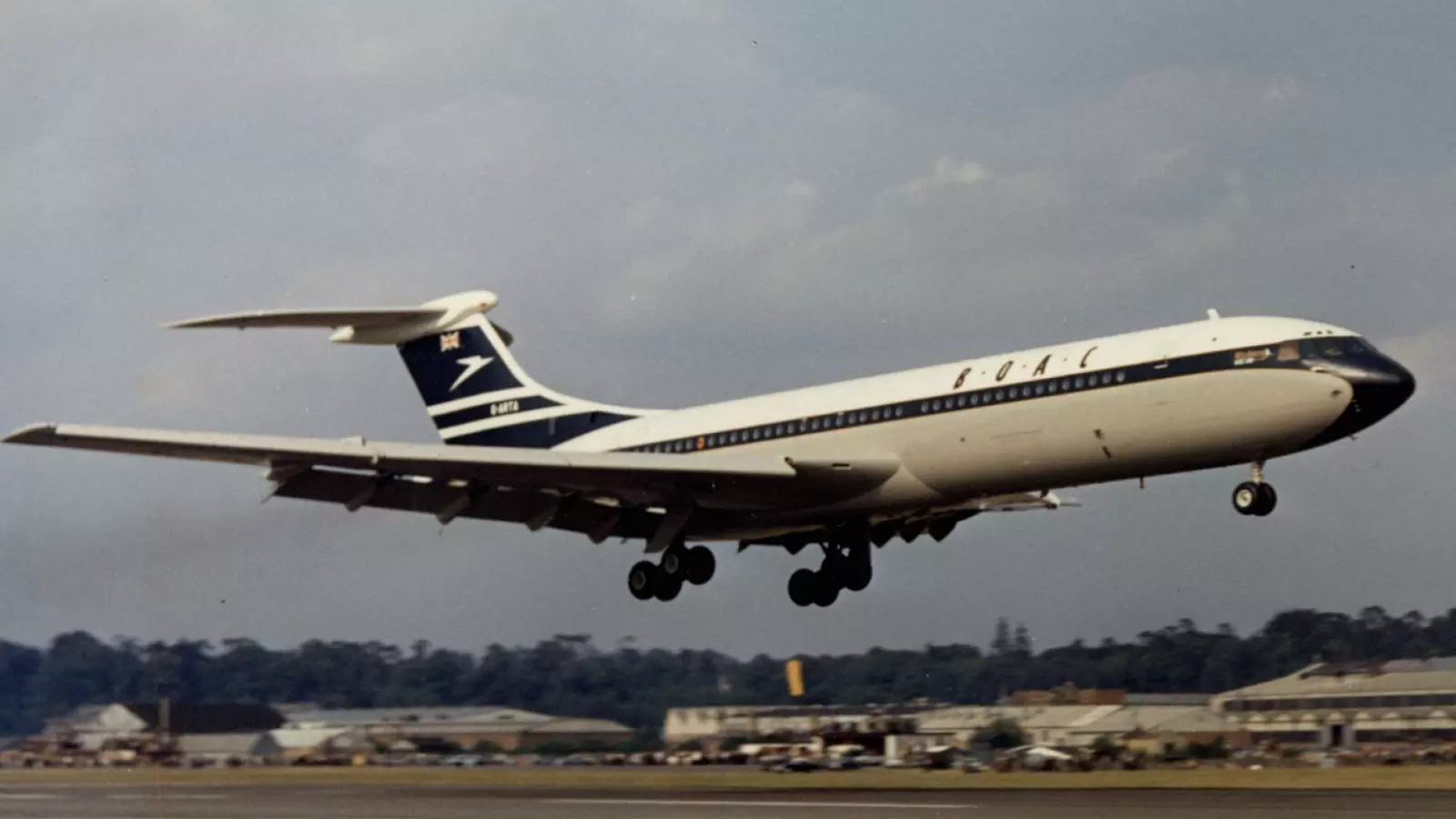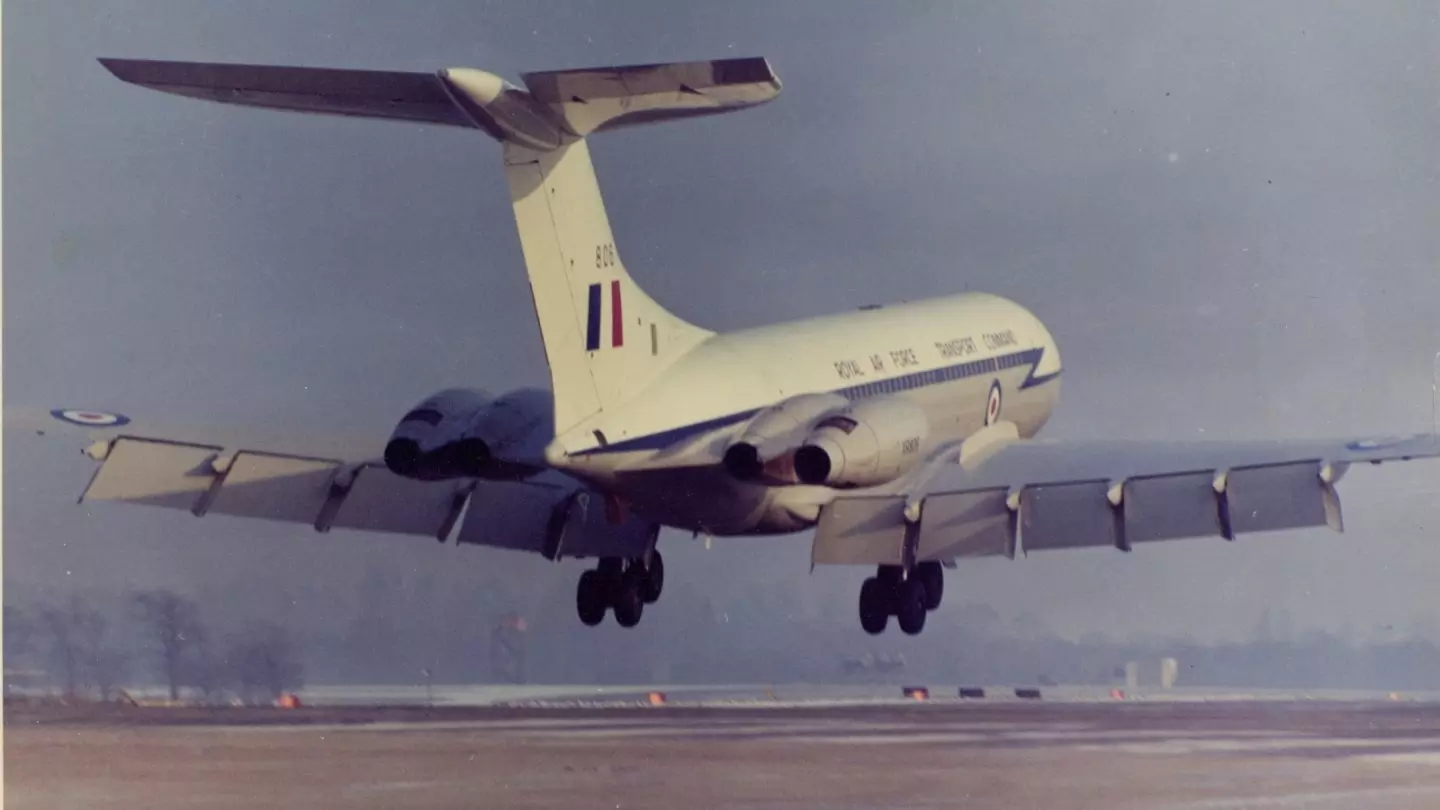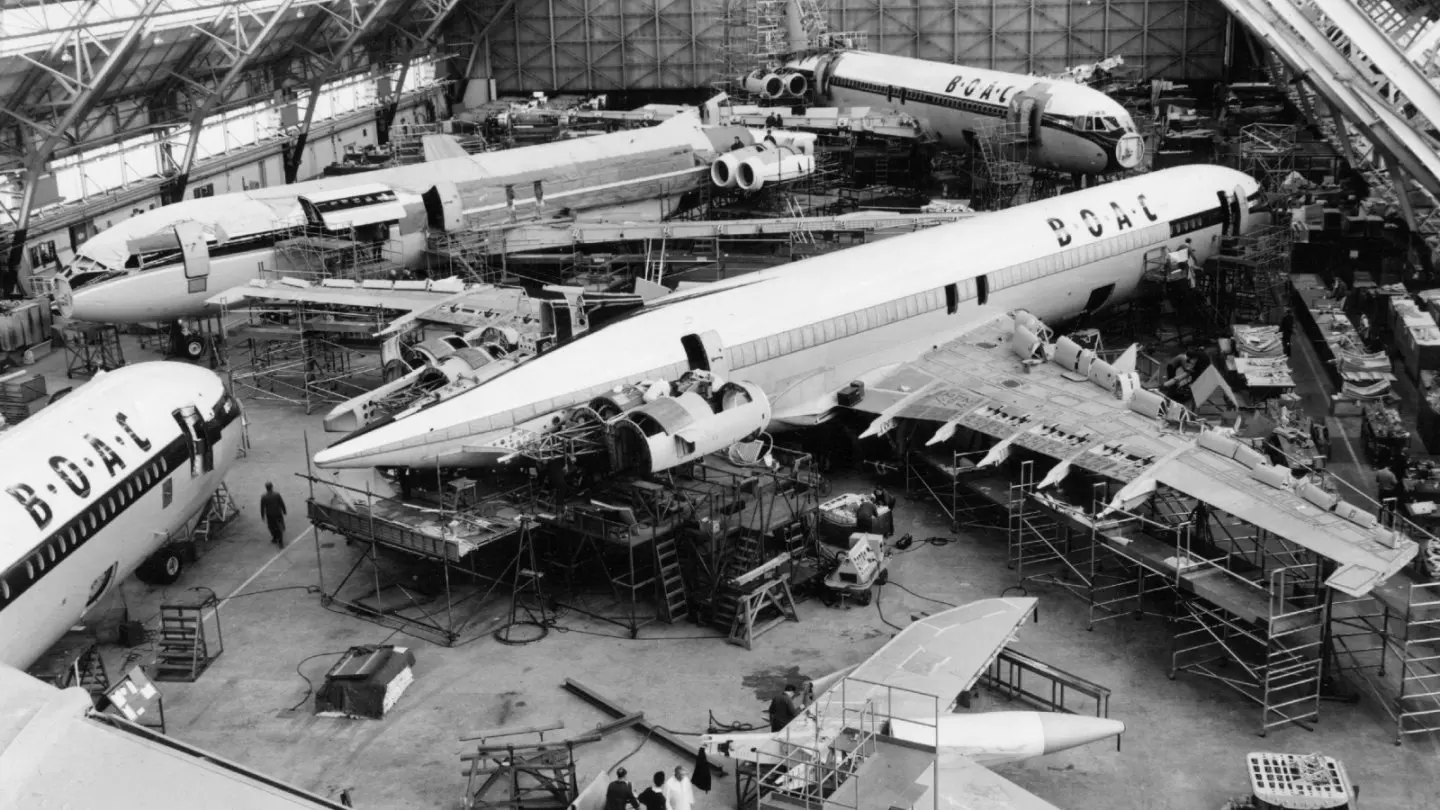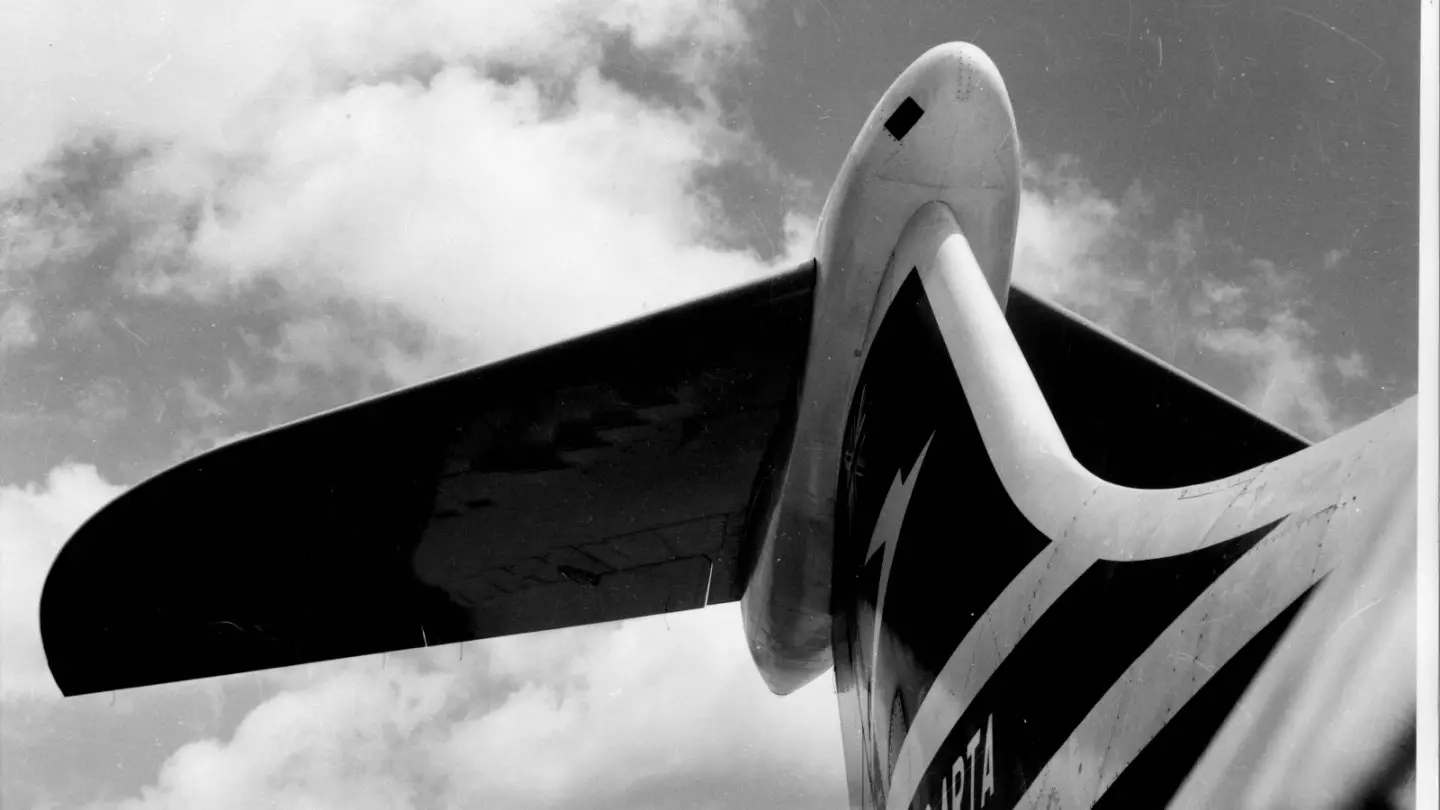Summary
- The VC10 was a unique and powerful aircraft that was built in the UK in the 1960s, intended for ex-Empire routes across Africa and Asia. It offered enhanced performance for hot and high airports.
- The VC10 was the last passenger aircraft built by Vickers-Armstrong before the company was absorbed into British Aerospace. It was initially intended to be a military transport jet but was offered to BOAC when the RAF scrapped its plans.
- The VC10 had an unusual quadjet configuration with powerful engines mounted high on the tail. It was used by various airlines, including BOAC, Gulf Air, Middle East Airlines, and Air Ceylon. It also had a successful career in the Royal Air Force.
In 1962, jet air travel was still in its infancy. While the UK had pioneered the industry with the de Havilland Comet, groundings through the 1950s saw the United States sweep the market with the Boeing 707, Douglas DC-8, and Convair 880.
Though the UK saw some success with its BAC One-Eleven regional airliner, it failed to recapture the glamour and fanfare of its glory days and was quickly losing ground to its American competitors.
By 1956, flag carrier BOAC had ordered 15 707s to serve on its routes, proving profitable for the airline, to the humiliation of the British Government and the UK’s dwindling and quickly consolidating aviation industry.
Enter the VC10 – a unique and, dare we say, slightly sexy aircraft. Offering four high-powered jets in a tail configuration, the VC10 was built for the UK’s ex-Empire routes across Africa and Asia. With enhanced performance for hot and high airports unmatched by any other contemporary aircraft, the VC10 saw service with flag carriers, including BOAC, Gulf Air, Middle East Airlines, and the long-defunct Air Ceylon.
Photo: BAE Systems
But before going forward, we have to take a step back and examine the VC10, its history, and its influence on the UK’s aviation industry.
Early development plans
Founded in 1927, Vickers-Armstong was an engineering company specializing in military ships, vehicles, and weapons, though it was aviation that brought the company to global recognition. Based out of Brooklands in Surrey, Vickers-Armstrong developed a variety of civilian and military aircraft, including the Vickers Valiant V-bomber, the Vickers Vanguard, and the Vickers Vanguard, which quickly became infamous for its unusually large number of hull losses.
The VC10 would become the last passenger aircraft built for the manufacturer before it was absorbed into British Aerospace in 1977. Initially intended to become a military transport jet under the moniker Vickers 1000, the RAF eventually scrapped its plans in 1955 following the construction of a prototype. Vickers-Armstrong offered up the plane to BOAC. However, the airline remained focused on the de Havilland Comet.
Photo: BAE Systems
Reflecting the general sentiment at the time, Vickers-Armstrong director George Edwards noted his disappointment in the program’s failure, explaining,
“We have handed to the Americans, without a struggle, the entire world market for big jet airliners.”
Turning tides
By 1957, BOAC sought a new aircraft to serve its ex-Empire routes across Africa, the Middle East, and Asia. Following issues with the Comet, BOAC looked to Boeing for its 707. A mainstay of transatlantic and continental European operations, the 707 failed to meet expectations at hot-and-high airports with its underpowered engines.
Vickers-Armstrong utilized the opportunity to relaunch its Vickers 1000 program, redubbing it as the VC10, now modified to offer enhanced performance for take-off in high altitudes and warmer climates. BOAC was impressed, sweeping up an order for 25 of the type in 1957 before expanding it to 35 the following year, with an option for 20 more.
An unusual configuration
Like other jets of its era, the VC10 was a quadjet; however, it boasted some very powerful engines arranged in an unusual setting. Mounted high on the jet’s tail, the configuration supported operations on rough runways or in dusty conditions, preventing external objects from entering the engine.
Vickers-Armstrong designed the aircraft with a T-tail design to boost short-field performance, similar to the British-designed Hawker Siddeley Trident and BAC One-Eleven. The VC10’s T-tail was designed with wider and full-span leading edge wing slats, emphasizing its focus on short runways.
Photo: BAE Systems
Contrary to popular belief, the similarly configured Ilyushin Il-62 was not a Soviet ersatz adaption of the VC10. Though similar in design, the Il-62 offered differing specifications and more capacity. The VC10 and the Il-62 remain the only commercial passenger jets ever to feature the unique configuration.
Launching service
Seven years after BOAC ordered the type, the VC10 took to the skies, with the UK flag carrier serving as its launch customer. Other earlier adopters included British United Airways, Ghana Airways, and East African Airways, with the later extended and modified Super-VC10 finding some popularity on transatlantic services. During its eight-year production run, just 54 aircraft were built, with many second-hand jets eventually being picked up by commercial and military operators based in the Middle East and Africa.
The type’s largest operator was the UK’s Royal Air Force, utilizing the VC10 as training jets, refueling tankers, and VIP transport. During Queen Elizabeth’s bicentennial South American tour in 1976, one aircraft was reconfigured to serve the Royal family’s needs. The aircraft was later utilized by King Charles, then-Prince of Wales, and Princess Diana during their 1986 royal visits to the UAE and Japan.
After BOAC merged with BEA in 1975 to form British Airways, the aircraft was passed along to the new national carrier and British Caledonian, becoming a reliable workhorse. As the industry shifted towards tri and twin jets, the VC10 was gradually phased out by more fuel-efficient jets through the late 1970s. British Airways had retired all nine of its inherited VC10 models by 1976, with its remaining 15 Super-VC10s remaining in active service until 1981.
During its time with British Airways, one Super-VC10 (G-ASGC) smashed records for a subsonic transatlantic crossing, recording a flight time of just five hours and one minute on a service between New York’s John F Kennedy International Airport (JFK) and Glasgow Prestwick Airport (PIK) in March 1979.
The record remained unbeaten for over 40 years, eventually being swept up by another British Airways flight, this time a Boeing 747-400, during Storm Ciara in 2020. The flight between JFK and London Heathrow Airport (LHR) scraped in at just five minutes faster than G-ASGC, recording a flight time of 4 hours and 56 minutes.
End of an era
Though the VC10 had been primarily retired from commercial service by the 1980s, the aircraft continued in military service for almost 50 years. The RAF purchased several ex-civilian examples, modifying them into VC10 K2 and K3 tankers, operating them on a range of combat missions in the 80s, 90s, and early 2000s.
By 2013, the last remaining VC10s were operated by the 101 Squadron as a tanker before the Airbus Voyager, based on the twinjet Airbus A330, took over the role.
The VC10’s last recorded flight was in September 2013, as part of a short transfer between Bruntingthrope Aerodrome in Leicestershire and Dunsfold Aerodrome in Surrey for preservation in its aviation museum. In an unusual move, the aircraft, kept in a taxiable condition by the Brooklands Museum Trust, was purchased by Kepler Aerospace in August 2020, intending to return the aircraft to flight as a tanker aircraft. As of November 2023, the company has yet to provide any updates on the project, with two other VC10 airframes reportedly purchased by Kepler Aerospace scrapped at Bruntingthrope in 2021.
If you’re hoping to catch a peek at the VC10, your best bet is at one of several museums across the UK, Germany, or the UAE.
Brooklands Museum, the former home of Vickers-Armstrong, boasts two of the type – one in Omani Royal Flight colors and another adapted into a VC10 exhibit. The Imperial War Museum in Duxford, the RAF Museum in Cosford, Woodfood’s Avro Heritage Museum, and East Midlands Aeropark also feature VC10s in varying degrees of preservation.
Outside of the UK, C-ARVF in UAE government colors remains on display at an aviation museum in Hermeskeil, Germany, while the Al Mahatta Museum in Sharjah has preserved the forward fuselage of ex-East African Airways 5X-UVJ.
Have you flown on a VC10? What was your experience? Let us know in the comments.




